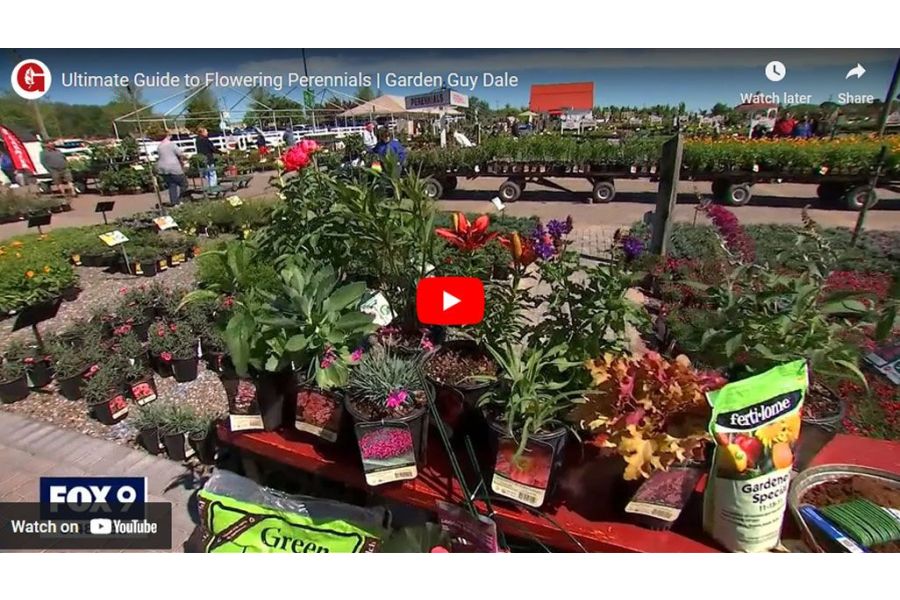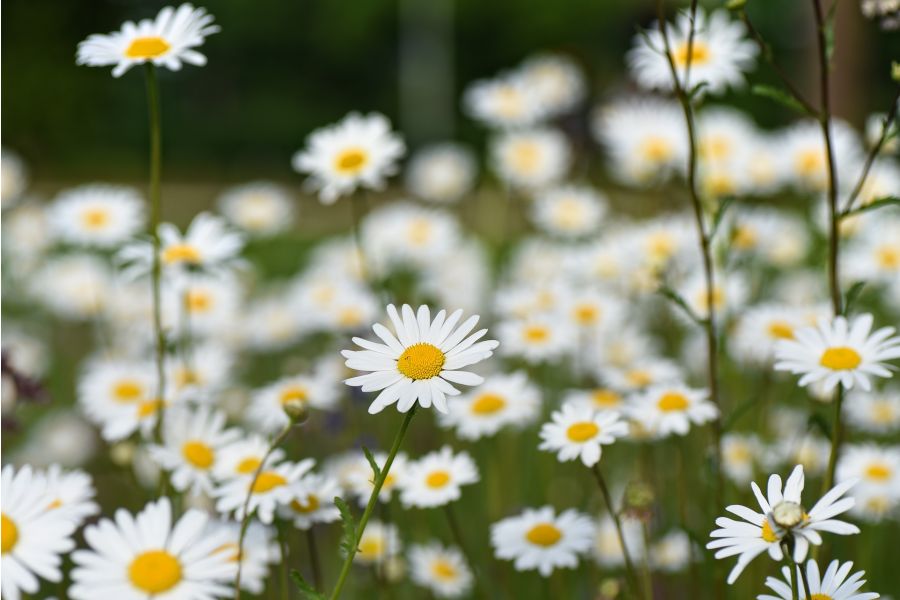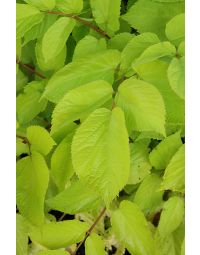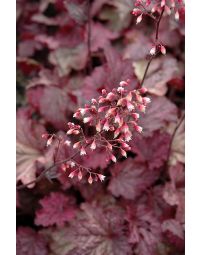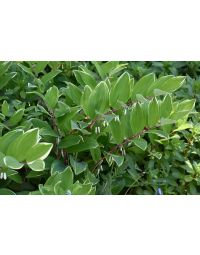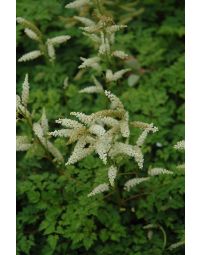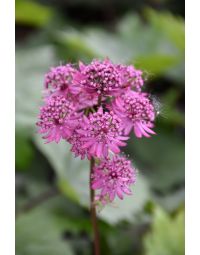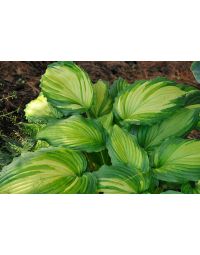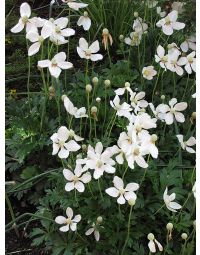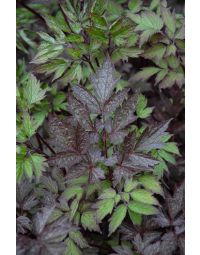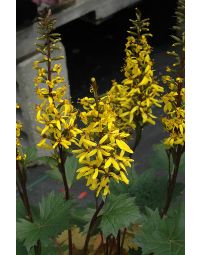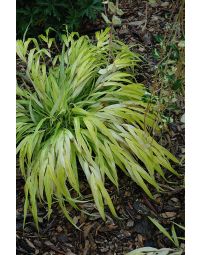Top Ten Perennials – Shade and Sun
In Memorium of our longtime friend and plant enthusiast, Gary Pagel. Gary had been answering customer questions for about 14 years here at Gertens. After 30 years in government, he returned to school for a Landscape Horticulture degree. Growing up in W. St. Paul, his first job at 12 years old, was caring for a neighbor’s garden. He offers his list of the top ten Perennials for Sun and for Shade.
Note: click on the links for pictures and much more information.
SHADE:
Aralia: 3’ to 4’ both tall and wide, this shrublike perennial’s foliage turns chartreuse to golden as the warm months progress. It was the 2020 Plant of the Year. Aralia gets thirsty but bounces back very quickly with a good drink of water.
Heuchera: Also called Coral Bells, are amazing foliage plants offering consistent color all season long. We grow nearly 3 dozen cultivars in a wide variety of colors.
Polygonatum: Its common name is Solomon’s Seal. Pale blue flowers hang along the stems of this 2 to 3 ft. tall, variegated beauty that loves shade. The green pointy leaves are tipped in cream.
Aruncus: Resembling a giant astilbe, the 4 ft. by 4 ft. type has spectacular white flowers in Spring with neat foliage for the remainder of the season. There is also a dwarf variety standing just a foot tall and fernlike foliage.
Astrantia: Long a standard in English gardens it is now common here. We carry 3 cultivars in shades of purple. The 2 ft. flower stalks last a long time.
Hosta: Everyone’s favorite “no effort” shade plant. We grow over 50 varieties. Some say they are overused but with amazing colors, sizes and leaf textures, they add color and drama to the shade garden. Hint: the thicker leaves are not favored by slugs.
Anemone: The Spring blooming varieties offer a sea of white flowers on short plants, barely reaching a foot tall. The Fall bloomers carry pink blooms about a foot above the 2 ft. tall foliage.
Cimicifuga: Few plants have as many names! Its botanical name was officially changed to Actea in 1998. We still call it cimicifuga. Its “common” names are unfortunate, Bugbane and Snakeroot! However, the 4 to 5 ft. plants have beautiful chocolate foliage with spears of white or pink flowers in late Summer.
Ligularia: We carry 2 varieties of 5 cultivars. One variety has green grape leaf shaped foliage with yellow flower stalks rising 1 to 2 ft. above the foliage. The other has round dark reddish-purple leaves and gold daisy-like flowers. Both need consistent moisture and little sun.
Hakonechloa: Also referred to as Hakone or Japanese Forest Grass, is a clump forming grass growing to just 18 inches tall with yellow foliage. It contrasts well with Hosta and other bold leaves in the shade.
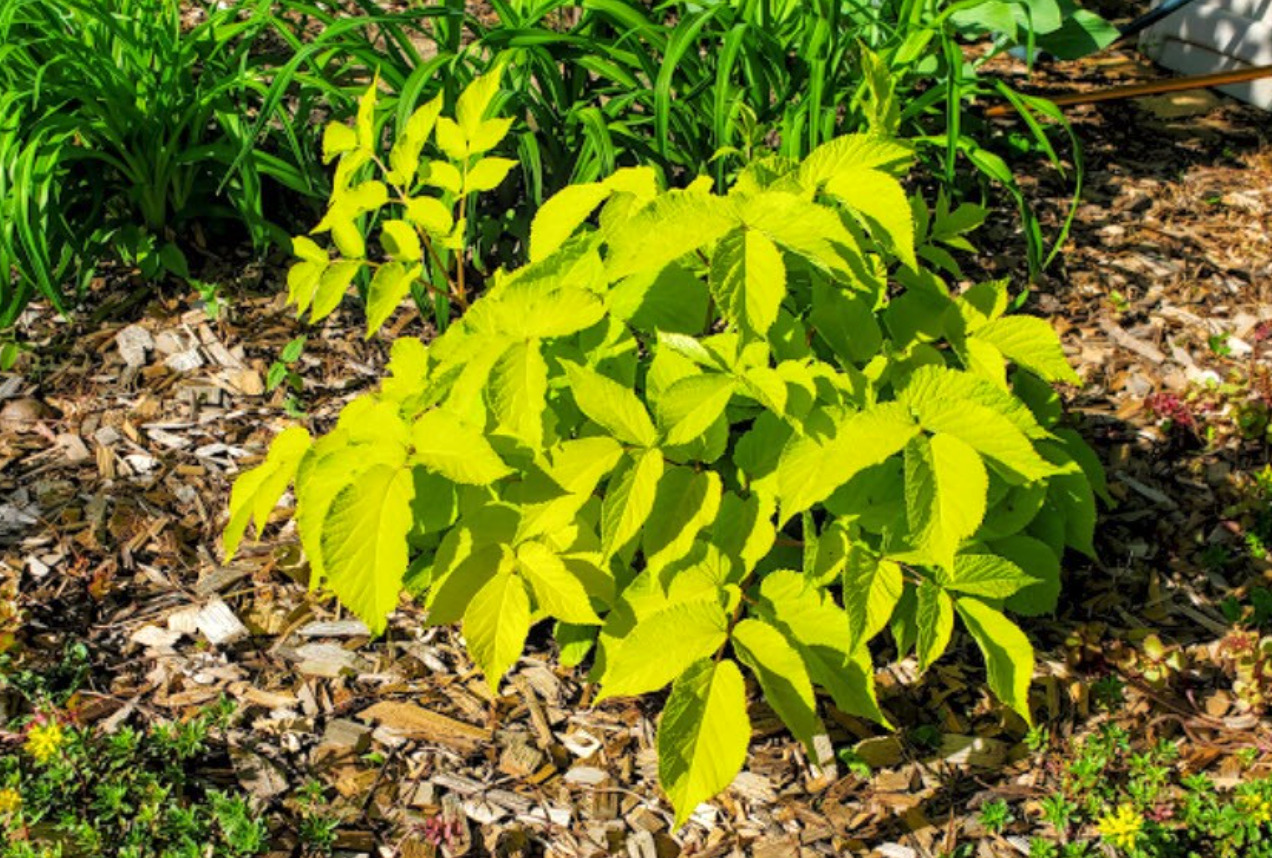
Aralia ‘Sun King’ early summer – enjoying part shade
SUN:
Eupatorium: aka Joe Pye Weed, is well known as a standard back of the border plant with its pink astilbe like flowers. Growing up to 6 ft., there are now shorter versions (about 30 inches tall) for the front of the garden. Joe Pye Weed tolerates clay soil, wet soil and deer while attracting butterflies.
Geranium: This is the go-to perennial for sun or shade. We offer 10 varieties with flowers in purple, pink and white. They are a great edging plant in front of the border. After a summer of blooms, the leaves turn bright red in fall!
Lobelia: aka Cardinal Flower, are one of the few types of truly red flowers, but this beauty lives up to its name. Pollinators love it as do hummingbirds. There is also a blue variety. Both need good moisture and sun, although they can tolerate part shade. The plants grow to about 2 ft. with the flower spikes rising above by another foot.
Delphinium: While this is a short-lived perennial lasting only three to four years nothing says English Cottage Garden better with its stalks of blue, pink, white and purple flowers. A newer variety offers the best blue flowers in the garden.
Paeonia: More commonly known as peony, it’s everyone’s favorite perennial with its huge flowers and generational life span. Peonies prefer to be planted shallow and given full sun for decades of enjoyment. However, they will tolerate part shade. We carry 13 cultivars, take a peek!
Perovskia: aka Russian Sage is a semi-shrub beauty with gray-green leaves and drifts of small purple flowers over the garden. It likes it hot and dry. Prune sparingly. From 16 inches to 3 ft. tall you’ll find the perfect size for your garden.
Penstemon: Also called Beardtongue, carry masses of tubular flowers on spikes above glossy foliage. ‘Dark Towers’ has deep purple foliage, while our other varieties have green. Flower colors are white/pink. Hummingbirds love them.
Rudbeckia: Commonly called Black-eyed Susan, they are a staple in the fall garden. There are many cultivars now. From the tall native to the newer dwarf selections. Many of the newer cultivars are disease resistant. All the flowers are shades of yellow with a deep brown eye.
Nepeta: Another staple of the garden, Catmint, provides a summer of blue flowers if it is given a heavy pruning after each bloom period. There are several new cultivars that are shorter and more compact.
Echinacea: Everyone loves Coneflowers for their daisy-like flowers in almost every color. The purple ones are still the hardiest, with the native being number one. They do reseed but all the different colors will revert to the parent purple color. While birds love the seeds if you want to avoid a garden of purple coneflowers do some deadheading. We grow 31 varieties in an astonishing array of color and flower shape.
And a bonus from Gary:
Leucanthemum: Shasta Daisies are another staple of the perennial garden. ‘Becky’ is an older cultivar that grows to 3 ft. Along with ‘Snowcap’, a short one-foot variety, they are the hardiest. All of our varieties will rebloom if deadheaded.
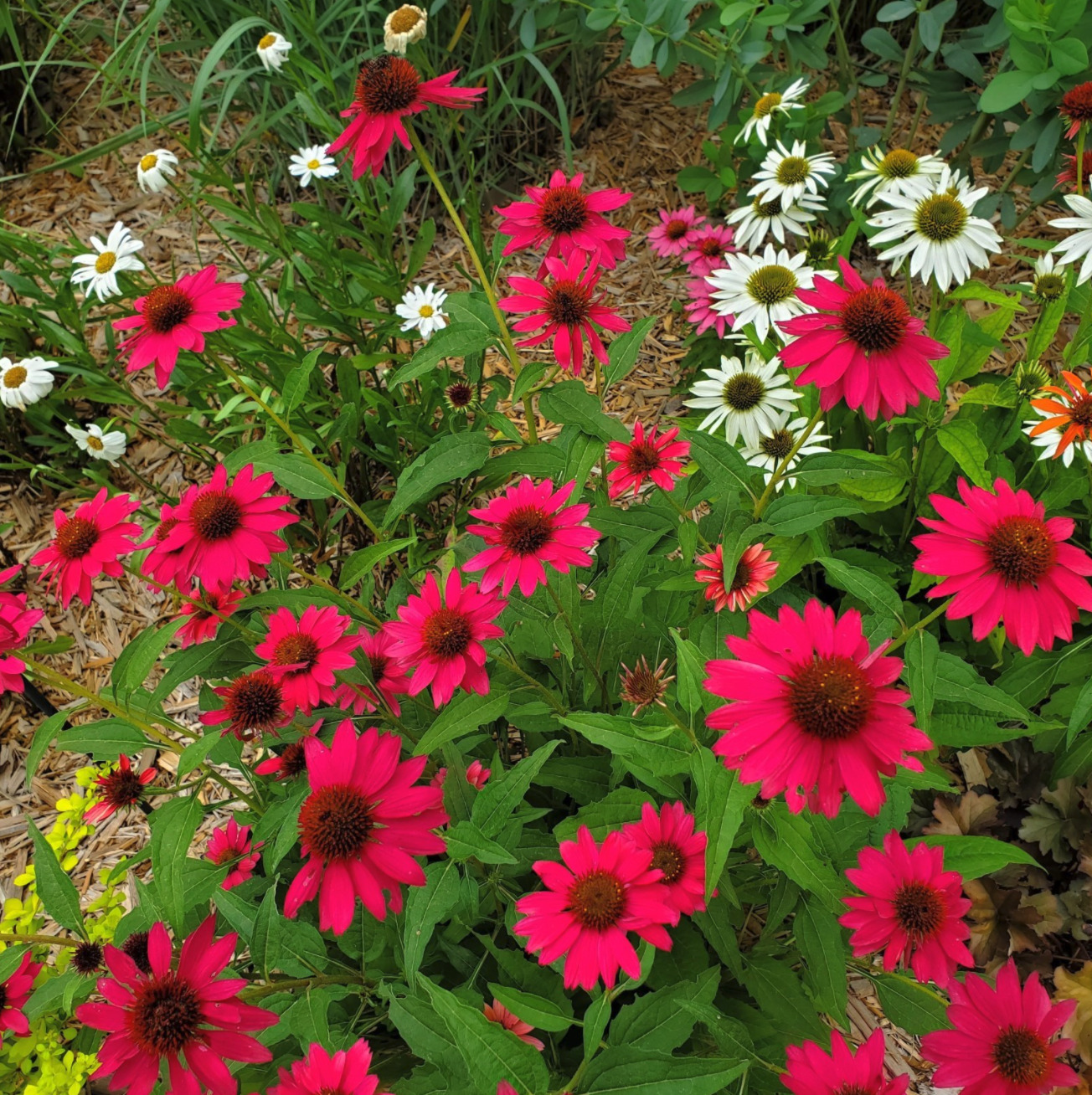
Echinacea ‘Pow Wow Berry’ loves sunshine


